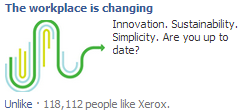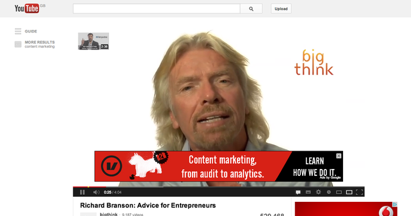
Your eBook is finished. That blog post is published. The final video has been delivered.
Job done, right? Well…
Before you expect results from your content marketing efforts, you have to have a content distribution strategy.
Think about it. Nothing can reach its full potential without a little help. For example, beans need water to grow. Unless, of course, your name is Jack and you sell the family cow for magic beans at the market, which then grow overnight into a massive beanstalk. But, unfortunately, I’ve spent some time in the grocery store and it seems these “magic beans” are the exception, not the rule.
The point? Producing quality content is the first step, but it needs to be distributed and shared to reach its full potential. Social media, email marketing, and SEO are all great ways to get your content discovered by your target audience. But there are some valuable assets you want to give an extra push. In these cases, paid promotion is a great option. As Joe Pulizzi and Todd Wheatland point out in this video, paid promotion and re-targeting can drive more traffic, subscriptions, and leads from the content you’ve worked so hard to produce. Even if you have a limited budget, it can give your content the boost it needs to get off the ground.
With that in mind, here are three paid promotion options to consider.
1. Social media advertising and promotion

Xerox have got over 100,000 followers by offering more than just an advert. They’re promising interesting and relevant content.
Social media advertisements perform very well at promoting great content and getting attention cheaply. This recent article on American Express’ OpenForum website gave many examples, including real estate search engine Estately. They used Facebook’s paid promotion for their fun blog post “37 Things You should know before moving to Seattle” and saw astonishing results.
“For under $100 we got our post in front of over 30,000 people,” says Estately CEO, Galen Ward. “Without Facebook, it would have traveled through our limited networks, but with Facebook ads we got it in front of virtually every person who might be interested in it. And because the content was engaging and in front of the right people, it sparked a ton of viral sharing.”
The key to its success was the fact they narrowed their message to a tight audience and reached them in the right place. They only advertised the article to people who liked the Seattle Seahawks on their Facebook profile. That highly-relevant audience meant they only reached people who were intensely attached to the city.
HubSpot, on the other hand, advertised on Facebook and Twitter but did not get satisfactory results. But LinkedIn worked for them.
“There’s a lot of distraction on other social networks [Facebook and Twitter],” said Dan Slagen, the company’s head of paid marketing. “People are there for reasons besides improving their businesses, or networking with other professionals. We need to connect with B2B companies that are focused on lead generation, which means LinkedIn is the place for us.”
The key here is to understand where your target audience is hanging out, and what types of content resonate with that audience in particular.
2. Content promotion networks

The above screenshot was taken from article about ‘Trump University’ on CNN Money. To the right is relevant branded content on studying
See those links to articles from “around the web”? Those are all pieces of content promoted through Outbrain, a brilliant tool for promoting blog articles and videos. It allows you to feature your content in a “related articles” or “around the web” section, which lives below articles on top sites. Outbrain’s networks covers some the largest, most influential news sites such as The Washington Post, CNN, Fast Company and Time. Through their service, you’ll be able to reach a relevant, influential demographic often for a few cents per click.
3. Content re-targeting platforms

Resonance is another interesting tool in testing. Have you come across those advertisements which follow you across the internet? It’s called re-targeting, and it’s a very sophisticated way of following up with people who visit a website then don’t act immediately. Resonance re-targets people who have viewed content on your site – and offers them more content. Doug Kessler, co-founder of top content marketing agency Velocity Partners, wrote this glowing review of his trial with the Resonance software.
These promotions appear all over the internet, for example, while listening to some big thoughts from Richard Branson.
This tactic is particularly useful at bringing back customers and building an audience. Especially with high-value B2B sales where customers need several different touch points with content before buying.
What other tactics do you use to promote your content? Do you allocate budget to promoting your content? Let us know in the comments below.
Beanstalk image courtesy of iCliff
